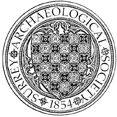Anstiebury Hill Camp
Further evaluation of the interior of the scheduled hillfort by G N Hayman for SCAU and English Heritage, to decide whether re-afforestation should be allowed. A number of pits and a ditch were found; the finds largely consisted of late IA pottery, with occasional Roman period sherds. (259; see report in SyAC 94, 191-207)


